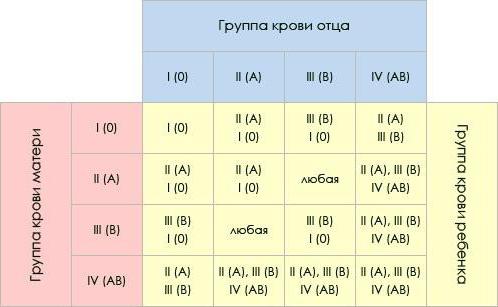How to solve problems in genetics on biology?
The study of the basic laws of heredity andthe variability of organisms is one of the most difficult, but very promising tasks facing modern natural science. In this article, we will consider both the basic theoretical concepts and postulates of science, and we will understand how to solve problems in genetics.

The urgency of studying the laws of heredity
Two of the most important branches of modern science -medicine and breeding - are developing thanks to the research of genetic scientists. The very same biological discipline, the name of which was proposed in 1906 by the English scientist U. Betson, is not so much theoretical as practical. Anyone who decides to seriously understand the mechanism of inheritance of various features (for example, such as eye color, hair, blood type), one must first study the laws of heredity and variability, and also find out how to solve problems in human genetics. This is exactly what we are going to do.
Basic concepts and terms
Each industry has a specific, only itinherent, a set of basic definitions. If we are talking about a science that studies the processes of transmission of hereditary traits, the latter will be understood as the following terms: gene, genotype, phenotype, parent individuals, hybrids, gametes, and so on. We will meet each of them when we study the rules explaining how to solve biology problems in genetics. But in the beginning we will study the hybridologic method. After all, it is he who underlies genetic research. It was proposed by the Czech naturalist G. Mendel in the 19th century.
How are the signs inherited?
The patterns of transmission of the properties of the organism werediscovered by Mendel thanks to the experiments he conducted with the well-known plant - pea inoculum. The hybrid method is a crossing of two units, which differ from each other by one pair of characteristics (mono-hybrid crosses). If the experiment involves organisms that have several pairs of alternative (opposite) traits, then they speak of polyhybrid mating. The scientist suggested the following form of recording the course of hybridization of two pea plants that differ in the color of the seeds. A - yellow paint, and - green.

In this record F1 - hybrids of the first (I) generation. They are all absolutely uniform (identical), since they contain a dominant gene A, which controls the yellow color of the seeds. The above entry corresponds to the first Mendelian law (F1 hybrids uniformity rule). Knowledge of it explains to students how to solve problems in genetics. Grade 9 has a biology program in which the hybridological method of genetic research is studied in detail. It also considers the second (ІІ) rule of Mendel, called the law of splitting. According to him, the F2 hybrids obtained from the hybridization of the two hybrids of the first generation with each other show a splitting in the ratio of phenotype 3 to 1, and in genotype 1 to 2 and to 1.

Using the above formulas, you will understand,how to solve problems on genetics without errors, if under their conditions it is possible to apply the first or already known II Mendelian law, considering that crossing occurs with complete domination of one of the genes.
The law of independent combination of states of features
If the parents differ in two pairsalternative signs, for example, the coloring of seeds and their shape, in plants such as pea seed, then in the course of genetic crossing it is necessary to use the Pinnet lattice.

Absolutely all hybrids that are the firstgeneration, obey the Mendelian uniformity rule. That is, they are yellow, with a smooth surface. Continuing to cross between the plants from F1, we get hybrids of the second generation. To find out how to solve problems in genetics, the 10th grade in biology lessons uses a record of dihybrid crosses, applying the splitting formula to phenotype 9: 3: 3: 1. Provided that the genes are located in different pairs, you can use the third postulate of Mendel - the law of independent combinations of states of characteristics.
How are blood groups inherited?
The mechanism of transmission of such a feature as a groupblood in humans, does not correspond to the laws that we examined earlier. That is, he does not obey the first and second laws of Mendel. This is explained by the fact that such a sign as the blood group, according to the researches of Landsteiner, is controlled by three alleles of gene I: A, B and 0. Accordingly, the genotypes will be:
- The first group is 00.
- The second is AA or A0.
- The third group is BB or B0.
- The fourth is AB.
Gene 0 is a recessive allele to genes A and B. And the fourth group is the result of codomination (the mutual presence of genes A and B). It is this rule that must be taken into account in order to know how to solve genetics tasks on blood groups. But that is not all. To establish the genotypes of children by blood group, born from parents with different groups, we use the table below.

The theory of Morgan's heredity
Let's return to the section of our article "Lawindependent combination of states of attributes ", in which we examined how to solve problems in genetics. Dihybrid interbreeding, like the third Mendelian law to which it obeys, is applicable to allelic genes in the homologous chromosomes of each pair.
In the mid-20th century, the American genetic scientist T. Morgan proved that most of the signs are controlled by genes that are located on the same chromosome. They have a linear arrangement and form clutch groups. And their number is equal to the haploid set of chromosomes. In the process of meiosis, which leads to the formation of gametes, not the individual genes, as Mendel thought, fall into the sex cells, but the whole of their complexes, called the clusters of Morgan.
Crossing-over
During the prophase I (it is also called the firstdivision of meiosis) between internal chromatids of homologous chromosomes, exchange of sites (lukus) takes place. This phenomenon has received the name of crossing-over. It underlies hereditary variability. Crossing-over is especially important for studying the sections of biology dealing with the study of hereditary human diseases. Applying the postulates set forth in the chromosome theory of Morgan's heredity, we will define an algorithm that answers the question of how to solve problems in genetics.
Gender-linked inheritance cases area special case of transferring genes that are located on the same chromosome. The distance that exists between the genes in the clutch groups is expressed as a percentage - morganids. And the adhesion between these genes is directly proportional to the distance. Therefore, crossing-over often occurs between genes that are located far apart. Consider the phenomenon of concatenated inheritance in more detail. But in the beginning we will recollect, what elements of a heredity are responsible for sexual attributes of organisms.
Sex chromosomes
In the human karyotype, they have a specificstructure: in female individuals are represented by two identical X-chromosomes, and in men in the sex pair, except for the X-chromosome, there is also the Y-variant, differing in form and in the set of genes. This means that it is not homologous to the X chromosome. Such hereditary human diseases as hemophilia and color blindness, arise from the "breakage" of individual genes in the X chromosome. For example, from the marriage of a carrier of hemophilia with a healthy man, this offspring may be born.

The above mentioned course of genetic crossingconfirms the fact of the adhesion of the gene controlling the clotting of blood to the sex X-chromosome. This scientific information is used to teach students the methods that determine how to solve problems in genetics. The 11th grade has a program in biology, in which such sections as "genetics", "medicine" and "human genetics" are considered in detail. They allow students to study hereditary human diseases and to know the reasons for their occurrence.
Interaction of genes
Transfer of hereditary traits is a processquite difficult. The above schemes become clear only if students have a basic minimum of knowledge. It is necessary, because it provides mechanisms that answer the question of how to learn to solve problems in biology. Genetics studies the forms of gene interaction. This is the polymer, epistasis, complementarity. Let's talk about them in more detail.
The example of inheritance of hearing in a person isan illustration of this type of interaction, as complementarity. Hearing is controlled by two pairs of different genes. The first is responsible for the normal development of the cochlea of the inner ear, and the second is responsible for the functioning of the auditory nerve. In the marriage of deaf parents, each of which is a recessive homozygote for each one of the two pairs of genes, children with normal hearing are born. In their genotype, there are both dominant genes that control the normal development of the hearing aid.

Pleiotropy
This is an interesting case of gene interaction, withwhich depends on one phenotype present in the genotype, the phenotypic manifestation of several features at once. For example, in western Pakistan, human populations of some representatives have been found. They have no sweat glands in certain areas of the body. Simultaneously, such people were diagnosed with the absence of some molars. They could not form in the process of ontogenesis.
In animals, for example, karakul sheep,there is a dominant W gene that controls both the color of the fur and the normal development of the stomach. Consider how the W gene is inherited when two heterozygous individuals are crossed. It turns out that in their progeny, ¼ of the lambs that have the genotype of WW, die due to anomalies in the development of the stomach. In this case, ½ (having gray fur) are heterozygous and viable, and ¼ are individuals with black fur and normal development of the stomach (their genotype is WW).

Genotype - whole system
Multiple action of genes, polyhybridcrossing, the phenomenon of linked inheritance serve as an indisputable proof of the fact that the aggregate of the genes of our organism is an integral system, although it is represented by individual gene alleles. They can be inherited according to the laws of Mendel, independently or by loci, linked according to the postulates of Morgan's theory. Considering the rules responsible for how to solve problems in genetics, we were convinced that the phenotype of any organism is formed under the influence of both allelic and non-allelic genes influencing the development of one or several characteristics.






